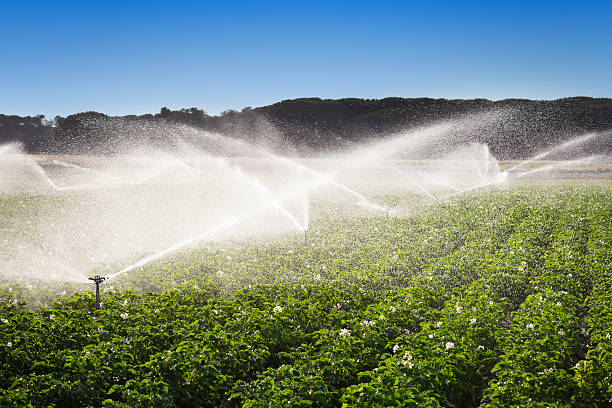Read in
It goes without saying that water is key to producing the food we eat.
But water is becoming increasingly scarce, driven in part by population growth and climate change. Given water’s importance to agriculture – irrigated agriculture already accounts for 70 percent of global water withdrawals – improving agricultural water use is vital.
A new investment brief looks at the use of remote sensing to assess and monitor agricultural water productivity, with a focus on water-scarce environments.
Published jointly by FAO and the World Bank, “Irrigating from space: using remote sensing for agricultural water management” specifically looks at the use of the FAO-developed WaPOR – Water Productivity through Open access of Remotely sensed derived data portal.
Thanks to near real-time satellite data, this tool can help countries monitor water productivity and identify and reduce water productivity gaps, explained FAO Land and Water Officer Livia Peiser.
“It can calculate or contribute to the estimation of key variables, like actual water consumption, irrigation water application and economic irrigation water productivity (EIWP) with high spatial resolution and for each agricultural season,” she said.
The brief’s authors argue that the correct application of WaPOR combined with economic data can lead to better policy and investment decision-making and more sustainable agricultural water management in water-scarce regions.
Cost-effective alternative
FAO Economist Luis Dias Pereira, one of the brief’s authors, explains that EIWP is an important indicator for policymaking. “It puts value in each drop of water that is used, providing a metric that can compare performances from farm to farm in complex multi-cropping systems,” he said.
“Collecting accurate field data can be difficult and expensive, but remote sensing technology like WaPOR is a cost-effective tool that contributes to the estimation of actual EIWP,” he added.
Data collected in the field or from hydro-meteorological stations is still extremely valuable. Remote sensing cannot fully replace field observations, but it can reduce the frequency and therefore cost of field data collection considerably.
A look at Lebanon’s Bekaa Valley
Using Lebanon’s Bekaa Valley as a case study, the brief’s authors applied a five-step methodology to calculate EIWP for irrigated wheat and potato crops in three of the Valley’s governates from 2014/15 to 2018/19. The Bekaa Valley is Lebanon’s breadbasket. The long-term sustainability of its agricultural output, which contributes significantly to the country’s economy, depends on good water management.
WaPOR can identify best and under-performing farms. It can also assess whether EIWP is strongly linked to irrigation volumes or whether factors like weather, soil conditions and agricultural practices also play an important role. This can help policymakers target, both geographically and in terms of scope, specific policies for each given crop.
But the authors recognize that often the most impactful interventions can only be designed when looking at a crop system as a whole. For instance, data from the Bekaa Valley case study show that early season potatoes are ten times more profitable and with a much higher EIWP than wheat. Although potatoes cannot replace wheat, the result shows that the choice of crops and cropping systems can have a much larger impact than adjustments in current agricultural practices for one crop.
The authors note that shifting to crops or practices with high EIWP can also mean higher water consumption.
On average, potatoes in Bekaa need more irrigation water than wheat. Shifting to high water-productive systems may require control of – and a decrease in – irrigated areas, as well as possible restrictions or caps on water withdrawals, if water consumption is to remain stable. Remote sensing can help monitor these changes.
Accurate crop system-wide analysis is key for introducing and monitoring impactful policies, which is where remote sensing can play a big role. According to FAO Geospatial and Data Analyst Andry Rajaoberison, another of the brief’s authors, crop system-wide analysis using data from WaPOR could be a game changer.
“This type of analysis could deliver more conclusive results regarding changes for higher average EIWP and the impact water policies have on the region’s overall irrigation water consumption,” he said.
Different uses
The authors argue that the analysis carried out for the Bekaa Vellay can be applied to any water-scarce system and contribute to water productivity assessments in data-scarce contexts.
The tool could be used to create policies related to irrigated areas and cropping pattern controls as well as for more traditional irrigation water management policies, like determining and monitoring compliance with water quotas. It could also be used with surveys to set the value of water and establish water prices. And data obtained through WaPOR could help inform dialogue around energy prices in agriculture.
“WaPOR not only gives us opportunities to design well-informed water management policies and investments but also to monitor the results of those policies and investments in real time, and that is powerful,” said Edoardo Borgomeo, Water Specialist with the World Bank.



